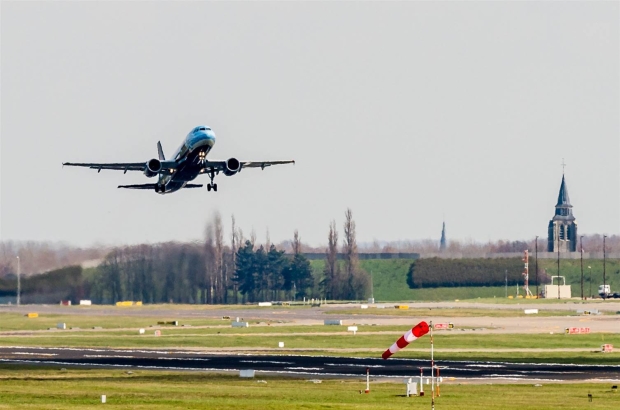- Daily & Weekly newsletters
- Buy & download The Bulletin
- Comment on our articles
Brussels Airport noise complaints continue to mount
Noise complaints continue to roll in from residents in the vicinity of Brussels Airport, and federal mobility minister Georges Gilkinet wants to speed up the search for a resolution.
A number of proposals are on the table, including one that would set new noise standards for aircraft and one that would implement steeper take-off and landing movements.
Gilkinet has remained relatively quiet about the thorny issue of airport noise until more recently, when he outlined some of the proposals to La Dernière Heure.
But protests against the nuisance of airport noise have been going on for decades across Belgium, in Wallonia and Flanders alike, and little progress has been made despite numerous legal battles.
Community squabbles between the various government bodies involved in the resolution process are usually behind the stalled progress.
In one case, a study commissioned by a former mobility minister three years ago was shot down by the courts following a complaint by the Brussels region. A French agency delivered a revised impact study later, but then Flanders opposed it.
“It is unfortunate that Flanders is critical of the results of a study for which it itself did not submit any proposals,” said Litte Frooninckx, a spokeswoman for Gilkinet.
“We now want to put structural solutions on the table that unite rather than divide.”
Gilkinet’s main goal is that Brussels does not end up as "the noise bin" of Europe, which Frooninckx said can be achieved in part by clarifying wind standards.
“That choice is in the hands of the air traffic controller and depends on the wind direction - aircraft invariably have to take off and land against the wind direction,” said Frooninckx.
“Safety also plays a crucial role in this, of course. Last month, the minister asked that the procedure be more strictly adhered to, as this could have a positive impact on noise pollution.”
Gilkinet has also commissioned a report intended to determine whether there are runways being overused, and there are plans to check whether they can be made quieter through adjustments to take-off and landing procedures.
“These should be more vertical. The higher the aircraft, the lower the noise impact on nearby residents,” Frooninckx said.
Abolishing night flights is another option on the table, along with renewed noise standards that ensure the planes allowed to land at Brussels Airport are modern ones, rather than noisy older ones. This is especially important for nights and weekends, according to Gilkinet.
Complications and complexities regarding Belgium’s regional governments aside, Gilkinet said one of the biggest barriers to progress on the noise issue is the high number of aircraft in Belgian airspace.
“We are working hard on alternatives to the plane for short and medium distances, such as night trains,” Frooninckx said, adding that the minister is pushing at European level for a review of the exemption of excise duties on private jets.
Earlier this year, a study revealed that Woluwe-Saint-Pierre is the most flown-over Brussels commune, with residents able to hear more than 26,000 planes taking off or landing there last year.
“This dossier is historically sensitive and also factually complex,” summarised Frooninckx.
“Zaventem is simply too close to densely populated residential areas. There is no magic wand to solve it with, but it is a priority. Still, anyone who thinks there are easy solutions in this dossier is mistaken.”



















